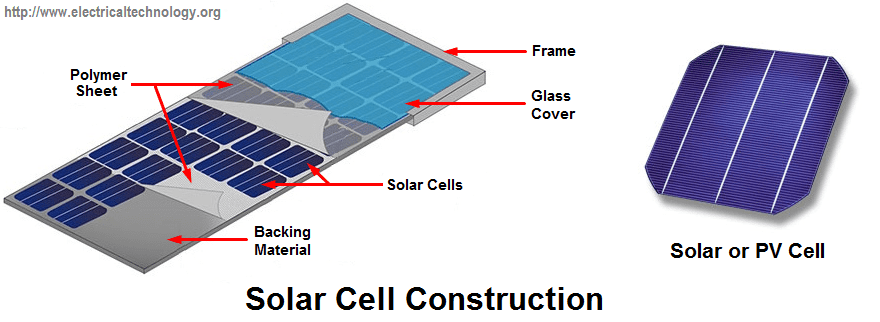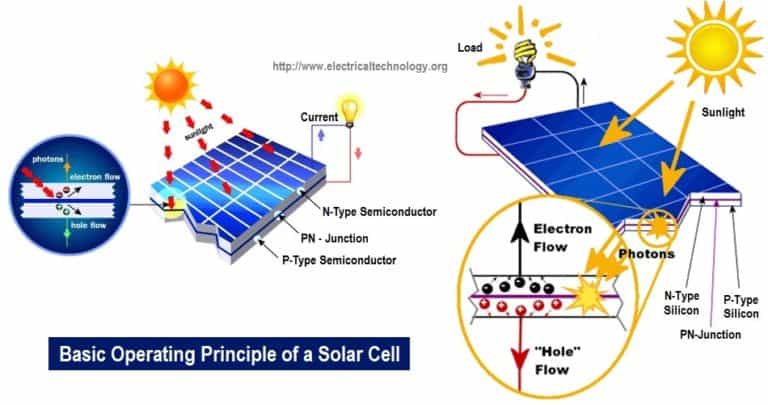Introduction to Solar Cell or Photovoltaic Cells
A solar cell (or Photovoltaic Cell) is a device that produces electric current either by chemical action or by converting light to electric current when exposed to sunlight. For the sake of this article, attention will be given to solar cells only.
Also read
A solar cell is also known as photovoltaic cell which produces electric current when the surface is exposed to sunlight. In the course of this article, we will be making reference to sunlight as electromagnetic radiation (EM-radiation).

In solar cells, the amount of electrical energy generated by the cells depends on the intensity of em radiation that reaches the surface of the cell. Solar cell converts em radiation to DC current. Thus we can say that a solar cell is a semiconductor junction device that converts electromagnetic radiation reaching us from the sun to electrical energy. As stated above, the current generated is DC.
Basic Operating Principle Of A Photovoltaic / Solar Cell
The principle operation of a solar cell is similar to conduction in a semiconductor like silicon. As seen in the picture, the dark surface is the part that is exposed to sunlight. When EM radiation strikes the surface of the cell, it excites the electrons and as such cause them to jump from jump from one energy level (orbit) to the other leaving holes behind.

These holes serve as the positive charge carriers while the electrons serve as negative charge carriers. Do not get confused, the electrons or holes do not constitute to give the electrical charges. They only carry the charges. By so doing EM radiation is converted to electrical energy. Solar cells are made basically from semiconductors like silicon and selenium being the most widely used.
To understand this better, let’s see the different types of semiconductor material as the materials extensively used in the production of solar cells are semiconductors.
Types Of Semiconductors
We have two types of semiconductors which are intrinsic and extrinsic semiconductors.
Intrinsic Semiconductors:
These are semiconductors that are pure in their own form. No impurity is added to improve their conductivity. Semiconductors of this type at zero degree Celsius have very little or no free holes and electrons for conduction.
Extrinsic Semiconductors:
These types of semiconductors are not pure in that they are doped (substances which serve as impurities are being added in order to enhance its conductivity). When a semiconductor is doped, the following materials are found;
P-Type Semiconductors
This kind of semiconductor is formed when a silicon, selenium or germanium is doped with a trivalent element (element with three valence electrons) like boron. Holes (positive charge carriers) are the major charge carriers in this type of semiconductor.
Comments
Post a Comment